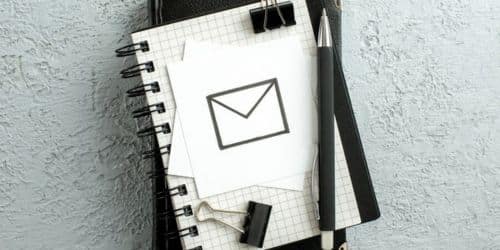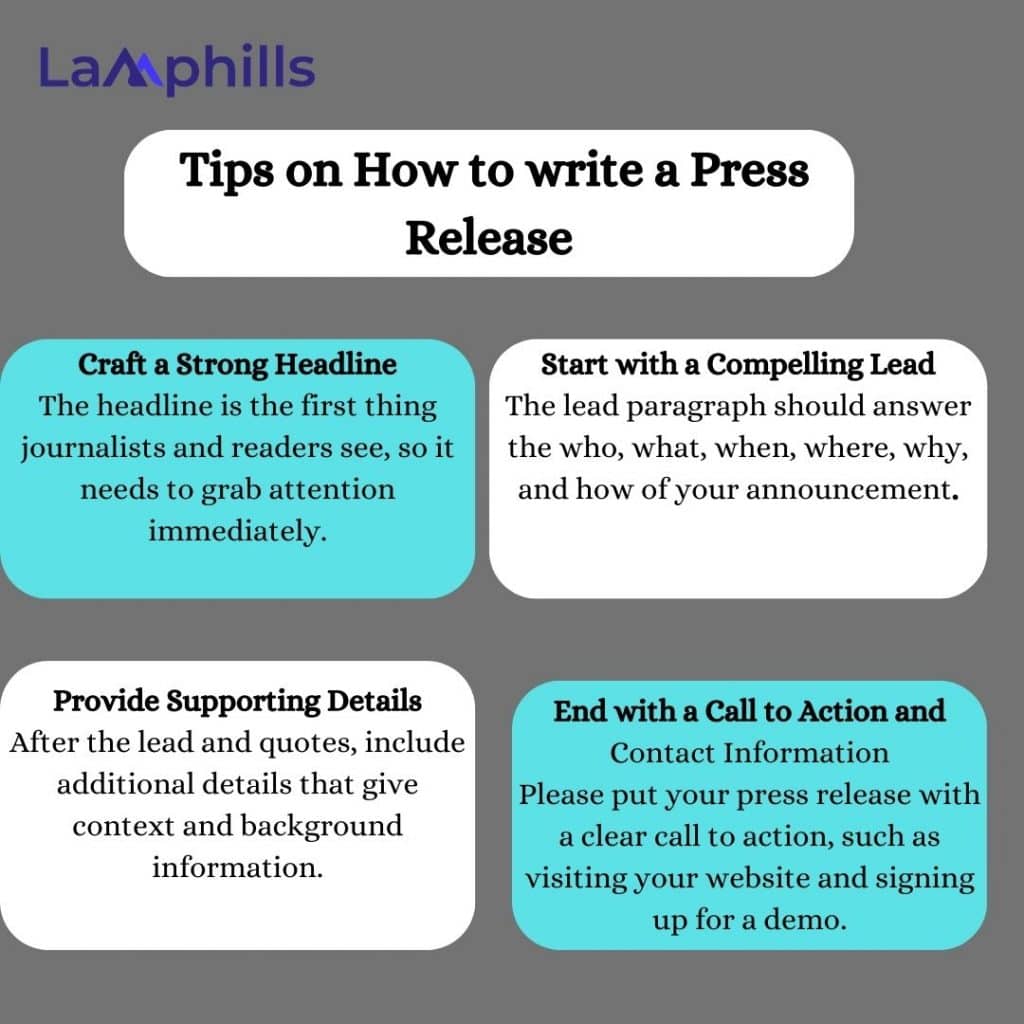I have always thought that writing a press release email is so tricky, not until I bumped into a template during my research. Now the question is, How do I send it? Sending out press releases can seem daunting, but it doesn’t have to be. In this guide, I will share how I get over the stress, making it easy for you. I will also share my experience and tips on writing and sending out effective press release emails. We’ll cover everything you need to know to ensure your news reaches the right audience.. So, let’s get started!
Key Points
- A press release is an official statement issued to the news media to provide information about significant company events or products.
- It should answer the “who,” “what,” “why,” and “where” questions in the first paragraph and use clear, understandable language with a quote.
- A sample press release email includes a brief description of the news, its relevance to the audience, and a call to action for more information or interviews.
- The subject line should be clear, concise, and attention-grabbing, summarizing the main point of the press release.
- Ensure the press release is newsworthy and well-written.
My Experience with Press Release Emails
I remember the first time I had to write and send out a press release. It was for a product launch at a startup I worked for. The process seemed overwhelming at first, but through research, practice, and a few trial-and-error moments, I learned what worked best. Here are some key takeaways from my experience:
The Challenges:
- Crafting a Compelling Story: It’s not just about providing information; it’s about making that information engaging and newsworthy.
- Targeting the Right Audience: Sending the press release to the right journalists and media outlets is crucial for gaining coverage.
- Perfecting the Timing: Finding the optimal time to send the press release to ensure it gets noticed.
What Worked:
- Personalization: Addressing journalists by their first names and referencing their past work helped in making the email stand out.
- Clear and Concise Writing: Keeping the email and press release to the point increased the chances of it being read.
- Follow-Ups: Politely following up with journalists who hadn’t responded ensured the press release didn’t get lost in their inboxes.
What Is a Press Release?
A press release is an official statement (written or recorded) that an organization issues to the news media and beyond. Regardless of the terminology used, the fundamental concept is always the same: a press release, statement, news release, or media release.
While the heading should contain action verbs, the first paragraph should answer the “who,” “what,” “why,” and “where.” The press release should also contain understandable language and a quote.
Press releases are typically brief, lasting at least one or two pages. Companies ultimately want to give enough details so that media outlets have enough content to write about whatever the company is releasing in their articles.
Remember that press releases are visible to your stakeholders and customers as they are published publicly. Therefore, they should be treated as an important piece of marketing content rather than just a means of getting news attention.
Tips for Writing a Press Release Email
Before you send a press release email to many contacts, there are a few key points to remember, similar to following an email marketing checklist.
Avoid Attachments: Don’t attach your press release as a separate file. There are two reasons for this: it adds an unnecessary step for your contact and might cause your email to end up in the spam folder. Making it easy for your contact is essential, and attachments can be seen as a barrier. Additionally, people are wary of opening attachments from unknown senders due to potential fraud, and some email systems may automatically send emails with attachments to spam.
Keep It Short: Journalists and influencers receive numerous emails daily and have other responsibilities. Respect their time and get straight to the point. Your email should answer three questions: Why you are emailing them, how your news benefits them and their audience, and how they can contact you for more information.
Timing Matters: Avoid sending emails on weekends and be mindful of open rate patterns during the week. Research varies, but many agree that Tuesday and Thursday are the best days, especially between 12 noon and 9 p.m.
Avoid Mass Emails: Personalization is crucial. Sending a mass email shows a lack of research and effort, which can damage potential relationships with publications. Make your news feel exclusive to each recipient.
Proofread for Mistakes: Before sending your email, proofread it for any errors. A sloppy email with mistakes can make you look unprofessional and lose the reader’s interest. A quick spell check can make a big difference.
How to write a press release
Here are seven steps to writing an effective press release
Here’s what you need to cover:
#1. Finding Something Worth Talking About
A press release is only as good as the story it sells. If your announcement doesn’t grab the audience’s interest, it won’t catch a journalist’s eye either.
#2. Making the Headline Pop
Think of the headline as the first impression. You want it to be intriguing and clear, highlighting the best part of your news. It’s worth putting in the extra effort here, much like you would with a first-date outfit.
#3. Boiling Down the Essence in the Subtitle
Imagine you had to tweet your press release; that’s what your subtitle should do. It backs up the headline and gives a hint of what’s coming.
Captivate, inspire, and leave a lasting impression. Contact us today and let our Press Releases and Speeches service elevate your brand’s storytelling to new heights.Get Quote
#4. Laying out the Key Details Up Front
Right off the bat, mention where you’re based, the date, and then dive into the “who,” “what,” “when,” “where,” and “why.” It’s like telling a friend a story but making sure not to leave out the parts they’d most interested in.
#5. Adding Color with Supporting Details
This is where you beef it up with quotes, stats, research findings, or highlights from a case study. For example, when trying to convince a friend of something, you bring out your best arguments.
#6. Guiding What Comes Next
Near the end, you want to suggest what the reader should do after finishing your press release, whether it’s checking out more info or getting in touch. It’s like ending your story with, “So, what do you think?”
#7.Wrapping up With a Bow – the Boilerplate
Finally, close with a concise paragraph about your company. It’s your chance to say who you are and why you matter, like signing off a letter with your best qualities.
Add, a little pro tip: always give your press release a final proofread. Nothing ruins a good story like typos or awkward phrasing. You can use online tools to help clean up your writing and convey your message.
Thanks for considering my request!
Check out our article on BEST TIME TO SEND A PRESS RELEASE ACCORDING TO YOUR AUDIENCE
How to Write Press Release Email Template

Credit: mdjaff
A press release email template is a pre-made format that helps you quickly and easily write a press release email. It includes the main parts you need, so you can just fill in the details about your news.
Lamphills Press Release Email Template
Example of a Press Release Email Template
Subject Line: [Your News in a Few Words]
Email Body:
Hi [Journalist’s Name],
I hope you’re well.
I’m excited to share that [Your Company Name] is [briefly describe your news, like launching a new product, hosting an event, etc.]. This [product/event/announcement] offers [brief description of the features or importance].
We believe this will interest your readers/viewers because [reason why it’s relevant to their audience].
Please see the attached press release for more information. We’d love to schedule an interview or provide more details at your convenience.
Thank you for your time and consideration.
Best regards,
[Your Name] [Your Position] [Your Contact Information]
Best Practices for Press Release Emails
- Always send a follow-up email 24 hours after your initial press release email, and be sure to ask for an RSVP.
- Use a friendly and professional tone, keeping your email concise while including all relevant information that could pique their interest.
- Additionally, always include a small call to action in your press release emails.
Why Does this Template Work?
- This email starts on a warm and flattering note, allowing the reader to empathize with the sender. Additionally, including the recipient’s first name raises the open email rate by 20%.
- It contains all of the information they require to make an informed decision and is written in a straightforward and succinct manner.
- This template is customizable, allowing you to adapt it for your prospect. It also has an outstanding call to action that raises the likelihood of a response.
Press Release Email Subject Line
The subject line of a news release email should grab the recipient’s attention and encourage them to open and read the email. Here are some good email subject lines for a news release:
- [Company Name] Announces [News Headline]
- [Breaking News] [Company Name] Makes Major Announcement
- [New Product/Service] Now Available from [Company Name]
- [Event Name] Coming Soon: [Company Name] Shares Details
- [Industry News] [Company Name] Shares Expert Insights
- [Company Name] Partners with [Partner Company Name] to [News Headline]
- [Big Achievement] [Company Name] Celebrates Major Milestone
- [Upcoming Promotion] Get Ready for [Company Name]’s Latest Deal
- [Important Announcement] [Company Name] Shares Critical Information
- [Exclusive Offer] [Company Name] Shares Special Deal with Subscribers
Remember to keep your subject line clear, concise, and informative. Avoid using vague or overly promotional language, as this can turn off recipients and decrease your open rates. Additionally, tailor your subject line to your specific audience and the news you are announcing.
How To Send a Press Release Through Email

Credit: rawpixel
Before you send your press release
- Ensure your press release is written correctly
- Ensure your press release is newsworthy
One of the most common ways to send a press release is via email. This is a quick and easy way to get your news in front of journalists, but it’s important to do it right. Here are some tips on how to send a press release via email:
- Start With a Strong Subject Line: The subject line is the first thing journalists will see, so it must be attention-grabbing and informative. Include the keywords journalists are likely to search for and ensure the subject line accurately reflects the content of your press release.
- Personalize Your Email: Address the email to the appropriate journalist by name, and include a brief introduction of yourself and your organization. This will help personalize the email and make it more likely for the journalist to read it.
- Make Sure Your Email Is Concise and Direct: Journalists rarely have time to read lengthy correspondence because they live busy lives. Ensure your email is no longer than a few paragraphs and gets right to the topic.
- Provide a Press Release Link in Your Email: Rather than adding your press release as an attachment, link it on your website or in a cloud-based storage service. This can prevent your email from being flagged as spam and make it simpler for journalists to obtain your press release.
- Follow-Up: After sending your press release, follow up with journalists to ask about any queries they may have or to inquire about possible interviews. This will raise your chances of having your news covered.
Read: 21 Event Press Release Templates & Examples That Inspires Me
What Do You Title a Press Release Email?
Your email subject line should summarize the primary idea of your press release in a succinct and informative manner. Avoid using imprecise, generic, or misleading remarks that do not convey to the recipient what the news is about. Instead of “New product launch”, put “XYZ launches innovative solution for ABC problem”
How Long Is a Press Release?
A press release should be between 300 and 400 words long and no longer than one page, including spacing and layout. With this in mind, writers must now concentrate on their content.
Conclusion
With the right approach and tools, sending out press releases can be simplified. By following these guidelines and best practices, you can ensure your press release emails are effective and well-received by journalists and influencers. Contact us today! We offer expert advice on crafting your message, delivering it effectively, and getting it in front of the right people at the right moment, using the most impactful methods.
Related Post
My Most Effective News Release Templates for the Best Results
21 Event Press Release Templates & Examples That Inspires Me
Press Release Boilerplate: Writing An Effective Copy






